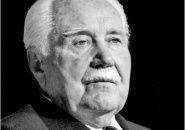Recommended:
- The Smolensk Conferences. A Preliminary Summary and Conclusion
- NEW STUDY: Putin's Russian inquiry into the Polish Air Force One crash in Smolensk
- 15 SIMPLE FACTS THE WORLD SHOULD KNOW
- Smolensk Reader's Digest. 23 pages, all the facts.
- Polish Military Intelligence was warned of a possible terrorist threat against one of the EU Member States' aircraft.
- Story behind the "1:24"
Last Polish president-in-exile Ryszard Kaczorowski has become the latest Smolensk disaster victim to be exhumed after concerns that his remains were mix-up by the Russians, in the latest twist regarding the 2010 Smolensk air crash in Russia that killed 96 Poles including president Lech Kaczynski.
This week's exhumation brings the total to seven, and the military prosecutor's office has not ruled out the possibility of further exhumations in the near future. So far, the exhumations have been undertaken under the prosecutions own initiative and judgment, systematically refusing such requests to relatives.
The exhumation follows the discovery that the remains of legendary Solidarity co-founder Anna Walentynowicz – were buried in the wrong grave. Last month investigators confirmed that the body of 1980s anti-communist opposition icon Anna Walentynowicz a founder of the Solidarity trade union had been switched with that of another crash victim.
28 months after the crash relatives of the Smolensk victims face the dreadful possibility of further exhumations due to numerous breaches and failure to ensure that recognised international standards were adopted during the identification and burial procedures. Concerns have also been raised about the exhumation procedure itself.
Families of victims, since autopsy files have been made available to them, have questioned the accuracy of the autopsy files, due to overwhelming amount of inconsistencies suggesting falsification or pure fabrication. Many relatives of the Smolensk victims have openly accused the autopsy files to have been falsified.
A fact to remember and keep in mind is that the coffins of the victims have been sealed in Russia and never allowed to be opened, once in Poland.
-----
Ryszard Kaczorowski served as the last President of Poland in exile. Knight of the Order of the White Eagle. Following the Polish Defensive War in the beginning of World War II he recreated the scouting movement – then delegalised by the Soviet authorities – clandestinely, and became a head of the Białystok banner of the Szare Szeregi. In 1940 he was arrested by the NKVD and sentenced to death; sentence was later changed to 10 years in a concentration camp in Kolyma. Following the Sikorski-Mayski amnesty Agreement of 1941 he was set free and enlisted in the General Władysław Anders' Army. After its evacuation from the Soviet Union, Kaczorowski joined the 3rd Carpathian Rifle Division, where he completed divisional secondary school. He fought in most major battles of the Polish 2nd Corps, including the Battle of Monte Cassino. Kaczorowski was also active in the Polish political circles and a member of the National Council of Poland. He was the President of the émigré Polish Scouting Union (ZHP). In 1986 he was appointed the Minister for Home Affairs within the Polish government in exile. He was an honorary chairman for numerous social and historical organisations, as well as an honorary citizen of almost 30 cities in Poland, including Warsaw, Gdańsk, Gdynia, Kielce, Kraków, Opole, Zielona Góra and his home town of Białystok. On 9 November 2004, Kaczorowski was appointed to the Order of St Michael and St George as an Honorary Knight Grand Cross by Queen Elizabeth II for "his exceptional contribution to the community of Polish émigrés and their descendants living in the UK."
Fot. Artur Reszko





